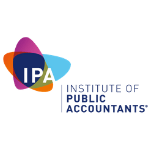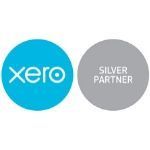Questions for Business Success: Ideal Customer
Since businesses have existed, these questions have perplexed their owners. Before AI, the internet and even electricity. Who's my ideal customer?
What makes my product or service attractive?
How should I be pricing my product or service?
In this series, we will see how three questions for business success are approached and provide some practical tools and techniques for the small to medium-sized enterprise owner to answer them.
Since businesses have been in existence, these questions have perplexed most of their owners. Before AI, before the internet and even before electricity.
Who is my ideal customer?
What makes my product or service attractive?
How should I be pricing my product or service?
An article in the NZ Herald from June 2024; Big Red, What went wrong for The Warehouse, highlighted the struggles of one of New Zealand’s most famous retail brands, The Warehouse. A senior analyst at investment house Forsyth Barr posed the question, “I don’t know if they [The Warehouse] know what they are and how they fit into the New Zealand retail landscape, or what they are going to compete on”. Another analyst, Greg Smith of Devon Funds Management, commented, “They need to recalibrate what is the value proposition”. For The Warehouse, which has used bargain prices as its core attraction, now has its competitors like Kmart dictating to Warehouse customers what a bargain actually is.
Given The Warehouse is a large, complex business in a highly competitive market, you might believe that it’s relevancy doesn’t apply to SME’s. But it does. No matter what size of business, the principles of success are all the same. Who are you selling to, why should they buy it and how much will they pay, are the foundations of success for global conglomerates through to food trucks. In fact, these questions are all linked and once you unlock the first two, then the third is much, much easier to answer.
In this series we will take a look at each of the three questions and shed some light on some approaches to get to the answers. This article deals with the first question.
Who is my ideal customer - target audience?
Advertising copywriting icon, David Ogilvy, wrote about “man's unchanging needs”. What he meant by this was that no matter the time or circumstances, consumers had and were driven by, an unwavering set of needs. These needs for example, were about youthfulness in the beauty industry, safety and style for cars, refreshment for drinks, and security for banks. Some of Ogilvy’s ads for these products contain claims and descriptions that could have been written yesterday, rather than in the 1950’s.
It’s important to remember that a demographic never bought anything. People do. A requirement to understand who you are selling to as an actual person is vital to understanding how to pitch your product or service at them in a way that they identify with.
Gender, age and class form part but not the complete answer. A buyer's attitude to your sector, circumstances that might lead them to consider your product or service are the first steps to building a profile of your customer.
Think of your ideal customer as a person pen portrait. Like how a character would be described in a novel. What would they look like, where do they live, what would they drive, what would they wear? And more importantly, why would these things matter to them? And then, where does your product fit into their world and why? Are they suddenly different person when they purchase your product? Different attitudes and values?
Your typical customers might not be able to be contained in one person, as you might have a primary audience and a secondary customer. Write these portraits separately. Work out which is the larger of your audience and assign a rough percentage to what of your business they represent. Bring them to life. Make them real to you. Give them a name. Live with them in your mind for a few days. Imagine how they live. And again, imagine them making a decision to purchase a product or service from you or your sector. When you are making a decision you can now reference your customer portrait and ponder their likely reaction.
Yes, I get it - this might sound like a project out of high school and you are an adult running a business, but believe me, it works. Great brands throughout the years grew using this technique - why shouldn’t it work for you? So, it goes to show that if you are struggling to answer the three questions or want to step back from the day to day for a minute to consider these questions - then it’s a good exercise. If a publicly listed company like The Warehouse is struggling to answer them, then you are not alone and shouldn’t see it as a problem but an opportunity to ensure your business has some of the fundamentals of success covered.















